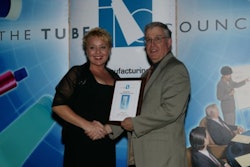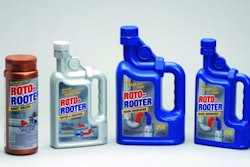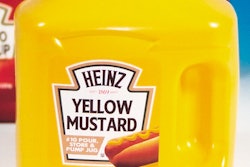
At Minneapolis-based Aveda, the environmental impact of a new package comes first, cost is second, and design is third. That stems from the company’s mission statement, in which Aveda “strive[s] to set an example for environmental leadership and responsibility.”
So it’s no surprise that this manufacturer of upscale cosmetics and health and beauty products has been on the leading—and some might say bleeding—edge of post-consumer-recycled (PCR) content in its packaging. The company now reaches 80% to 100% PCR in much of its packaging portfolio, with very little below 50% PCR.
Balancing act
Decisions are not always easy. “Our biggest challenge has been trying to make sure we still meet the environmental requirements [of the corporate mission] and maintain the quality of the package we would expect to provide to our customers,” says John Delfausse, Aveda’s vp of packaging.
As an example, the company boosted the PCR content in its high-density polyethylene bottles last year from 45% to 80%. “By doing that, it was a tremendous move,” says Delfausse, “but everybody from the president on down had to accept that the bottles’ color turned grayer. But we saved about 150 tons of virgin polyethylene on an annualized basis. I don’t think any other company is putting that level of recycled material into a cosmetics package.”
In some cases, Aveda’s quest for high-PCR packaging has led to unusual choices. When a search for high-PCR-content folding cartons didn’t turn up anything satisfactory, Aveda looked at catalogs and annual reports. “We found a cover stock with 100% post-consumer content,” says Delfausse. “Our printer was able to run the cover stock and actually make sleeves and cartons out of it.”
Because there are many complex factors that contribute to how a package impacts the environment, Aveda uses a special computer software program called Merge™ to help evaluate the impact of various packaging alternatives. In use at Aveda for about two years, the program was developed by the not-for-profit Alliance for Environmental Innovation, a project of Environmental Defense (Boston, MA), and the Pew Charitable Trusts. It scores or rates a product or package based on seven different metrics: packaging resource consumption, packaging energy consumption, virgin materials content, nonrecyclable materials content, presence of known toxins, greenhouse gases, and pallet inefficiency.
At what cost
Aveda has relentlessly lightweighted its packages and pushed its suppliers to increase the level of PCR content, even if it pushes up the cost of its packaging. There’s no average upcharge percentage because each package varies in PCR content; but, as a typical example, its PCR-contented extruded tube package (see tube photo, p. 74) carries a 16% upcharge over standard virgin materials.
However, Delfausse points out that not all Aveda packaging carries an upcharge. Like other suppliers, Aveda from time to time puts its packaging out for competitive bidding. Recently, Aveda found a new supplier that offered packaging with almost twice the PCR content for less than what Aveda had been paying.
Delfausse claims Aveda hasn’t encountered any serious machinability issues typically associated with high-PCR-content packaging. “The key to the PCR tubes was to get a true round opening for filling,” he says. “There were some ovality issues that needed to be overcome before we could get into production. We are also experiencing some paneling issues with our HDPE bottles at 80% PCR. But we believe that this may be due to lightweighting of the bottles and not because of the PCR.”























